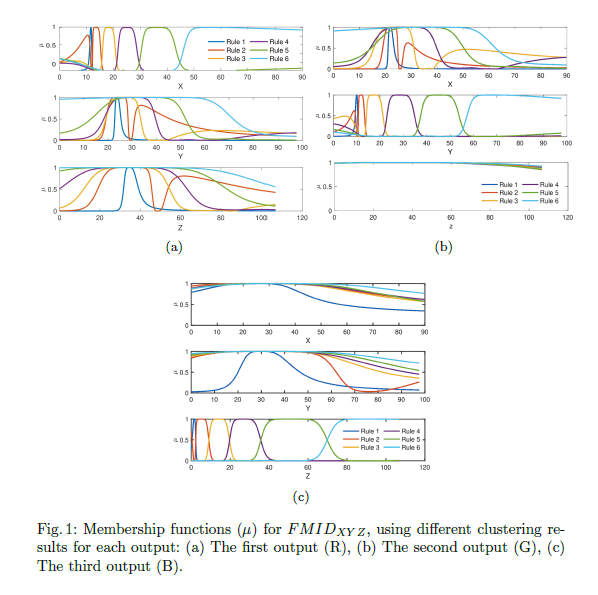«A Fuzzy Logic Inference System for Display Characterization» at IbPRIA 2023
Khleef Almutairi, Samuel Morillas, Pedro Latorre-Carmona and and Makan Dansoko. A Fuzzy Logic Inference System for Display Characterization.
Khleef Almutairi, a PhD student in VIPLab under the supervision of doctoral advisor Professor Samuel Morillas, has presented «A fuzzy logic inference system for display characterization» at the IbPRIA 2023: 11th Iberian Conference on Pattern Recognition and Image Analysis, held from June 27 to 30, 2023 in Alicante.
At the conference, he presented the application of a fuzzy logic inference system to characterize liquid-crystal displays. The researchers utilized the fuzzy modelling and identification toolbox (FMID, Mathworks) to build a fuzzy logic inference system based on a set of input and output data. This method not only provides excellent performance but also allows for easy interpretation. Once trained, they have obtained a physical interpretation of the model.
They use training and testing datasets relating device-dependent RGB data with device-independent XY Z or xyY coordinates, measured with a colorimeter. We study different configurations for the model and compare them with three state-of-the-art methods in terms of ΔE00 visual error.
They use training and testing datasets. These datasets are related to device-dependent RGB data with device-independent XY Z or xyY coordinates, which are measured using a colorimeter. They analyze various configurations for the model and compare them to three state-of-the-art methods to determine their ΔE00 visual error.
This study is limited to a single display and identify the features of the model that the group believe are more dependent on the display and may vary for a different display.

Conclusions
A thorough study of toolbox parameter concluded with three models being trained and tested in terms of visual error against other three, which they clearly outperform.
- The models relating XY Z − RGB data show better performance than when xyY − RGB was used.
- A model with 13 clusters showed the best performance closely followed by a model with only 6 clusters. We analysed in detail the information encoded in this latter model which was easier to interpret. We found that 6 different levels of X, Y , and Z where considered to determine R, G, and B, respectively.
- Activation output functions of the FIS account with positive relations between X and R, Y and G, and Z and B and either negligible or inverse relations among the rest. Inverse relations are interpreted as the way the model has found to compensate for the correlations and overlappings that exist between the RGB primaries in terms of XY Z coordinates of the generated colours.
IbPRIA
IbPRIA is an international conference co-organized by the Portuguese APRP and Spanish AERFAI chapters of the IAPR International Association for Pattern Recognition, and it is technically endorsed by the IAPR. IbPRIA consists of high-quality, previously unpublished papers, presented either orally or as a poster, intended to act as a forum for research groups, engineers and practitioners, to present recent results, algorithmic improvements and promising future directions in pattern recognition and image analysis.



